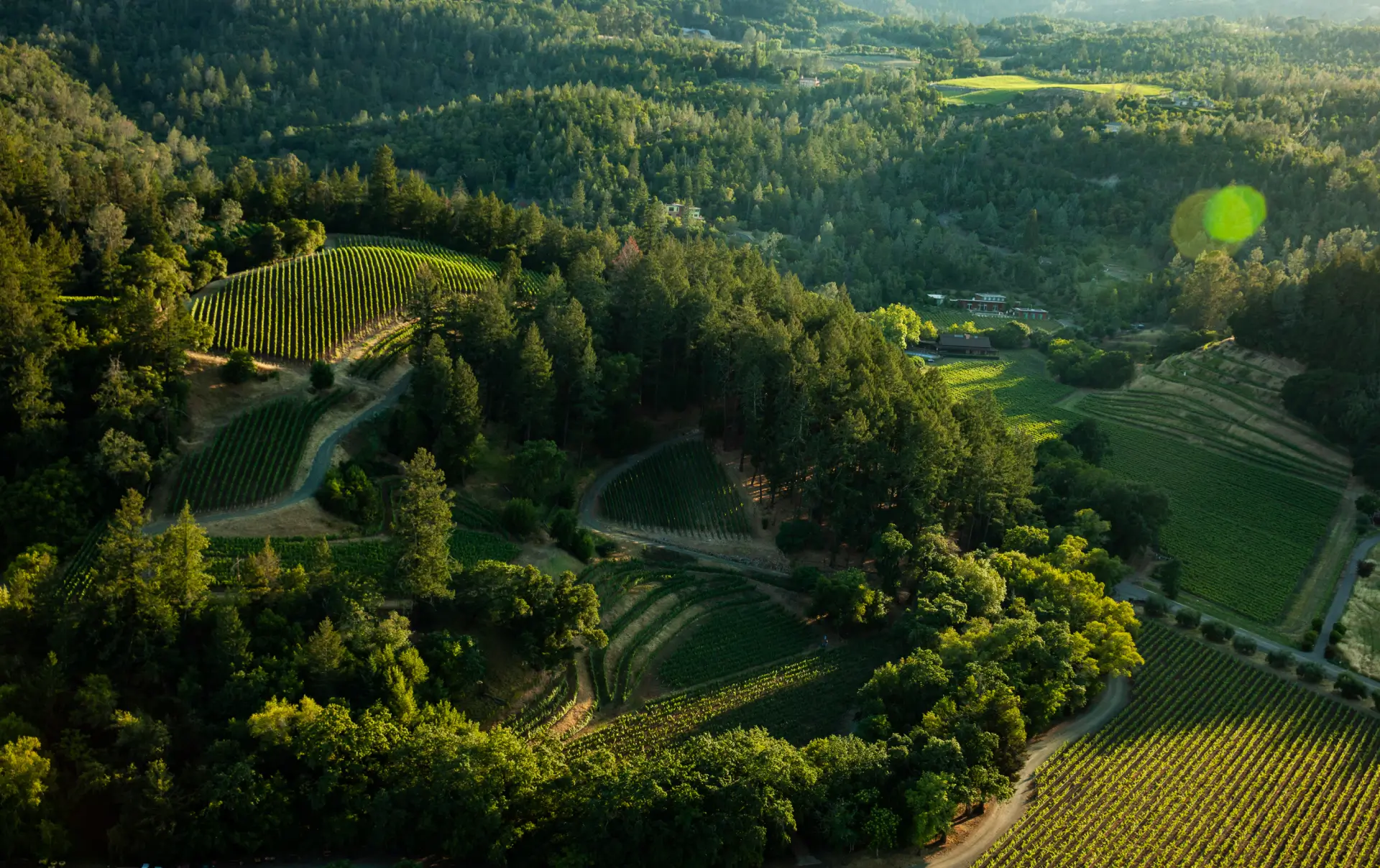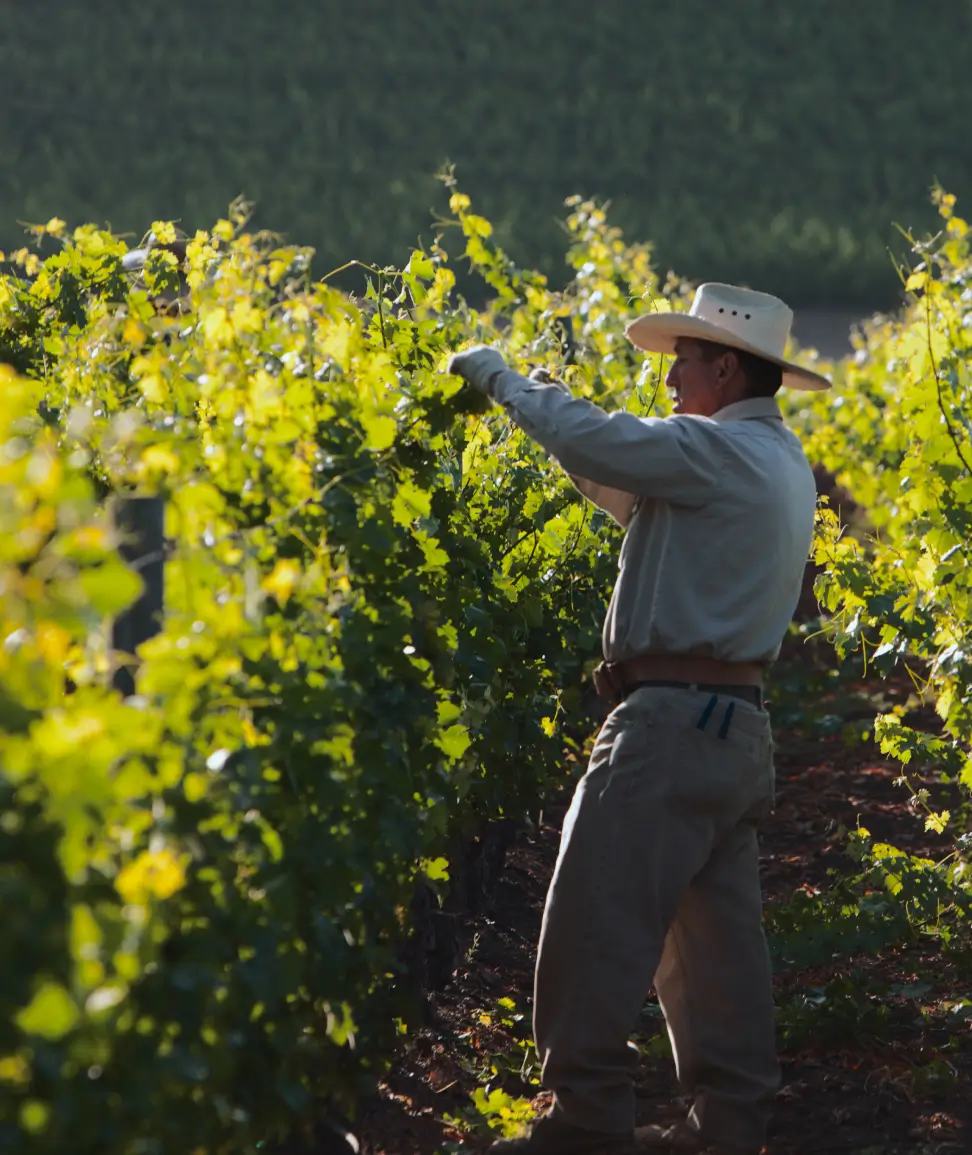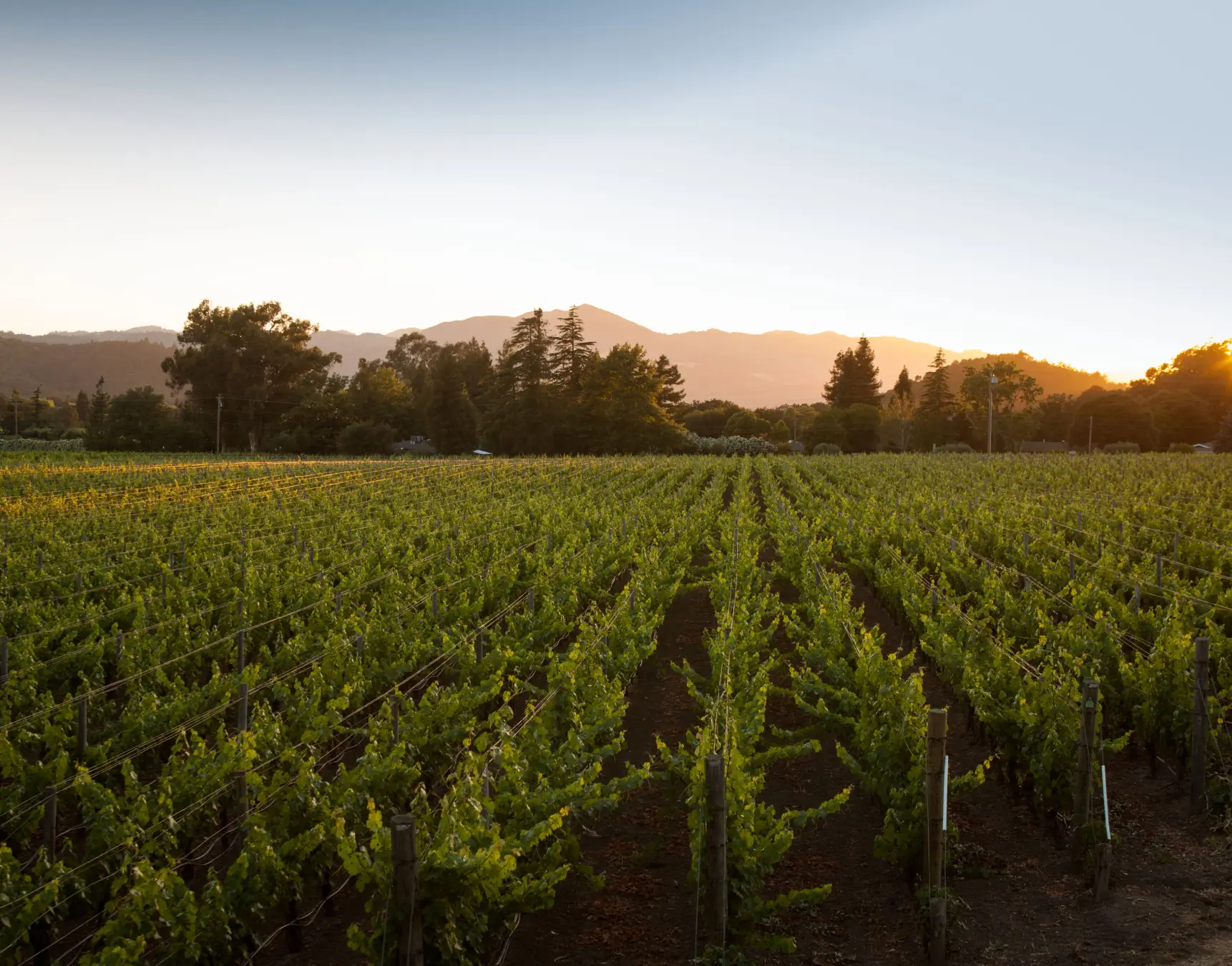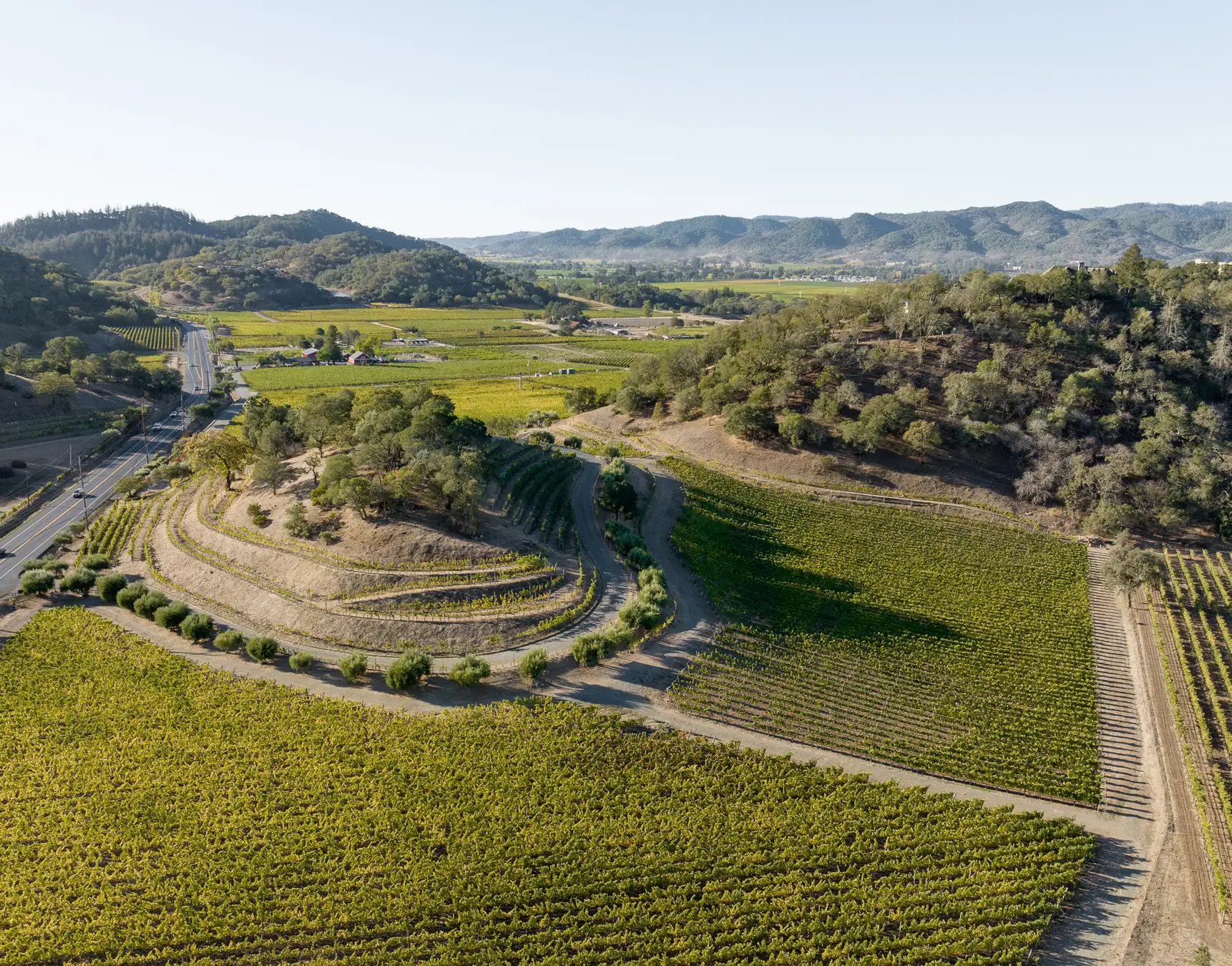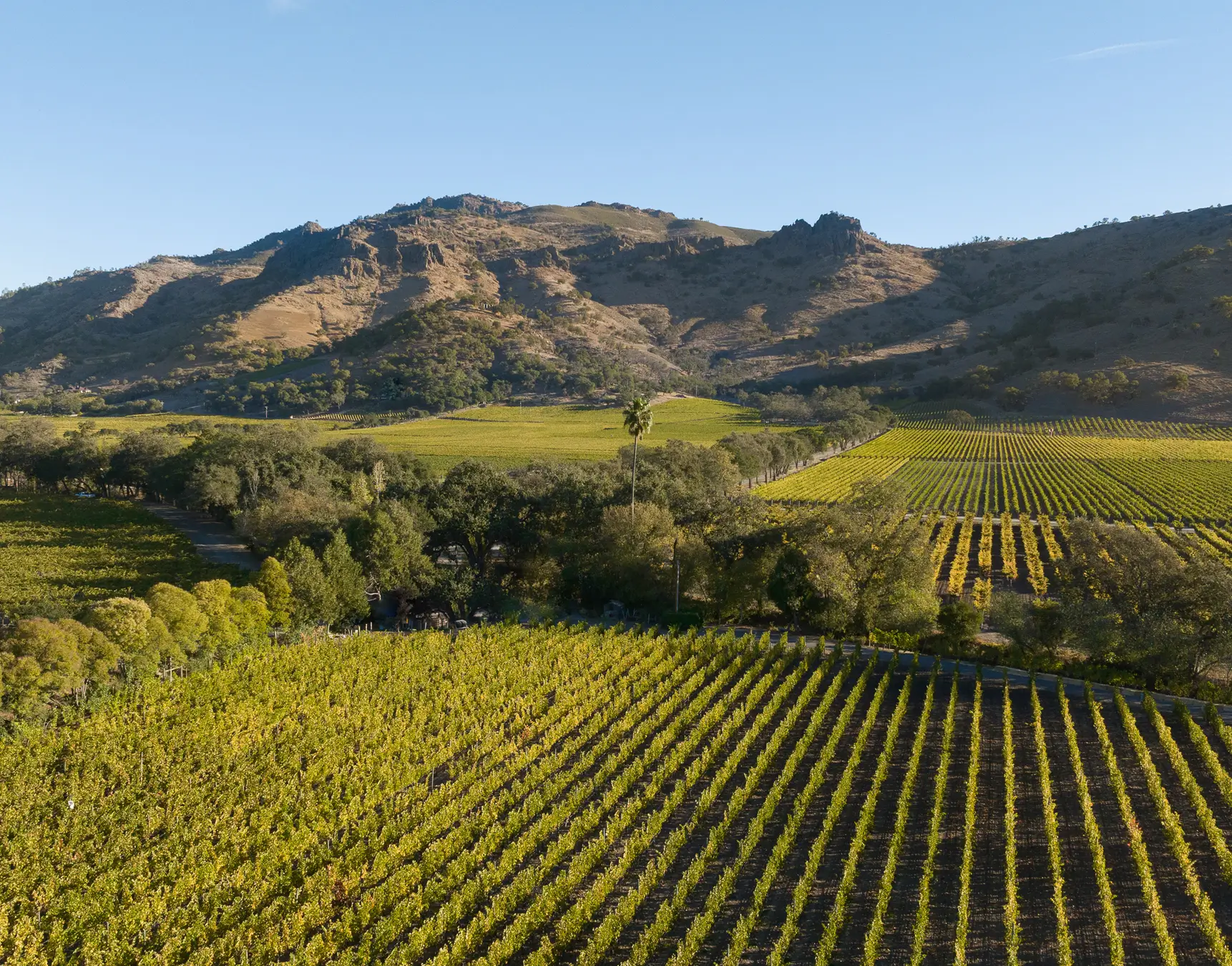Eager to portray the dramatic diversity at play in the Napa Valley, Pine Ridge has acquired some 160 acres of vineyard spanning five wildly unique AVAs.
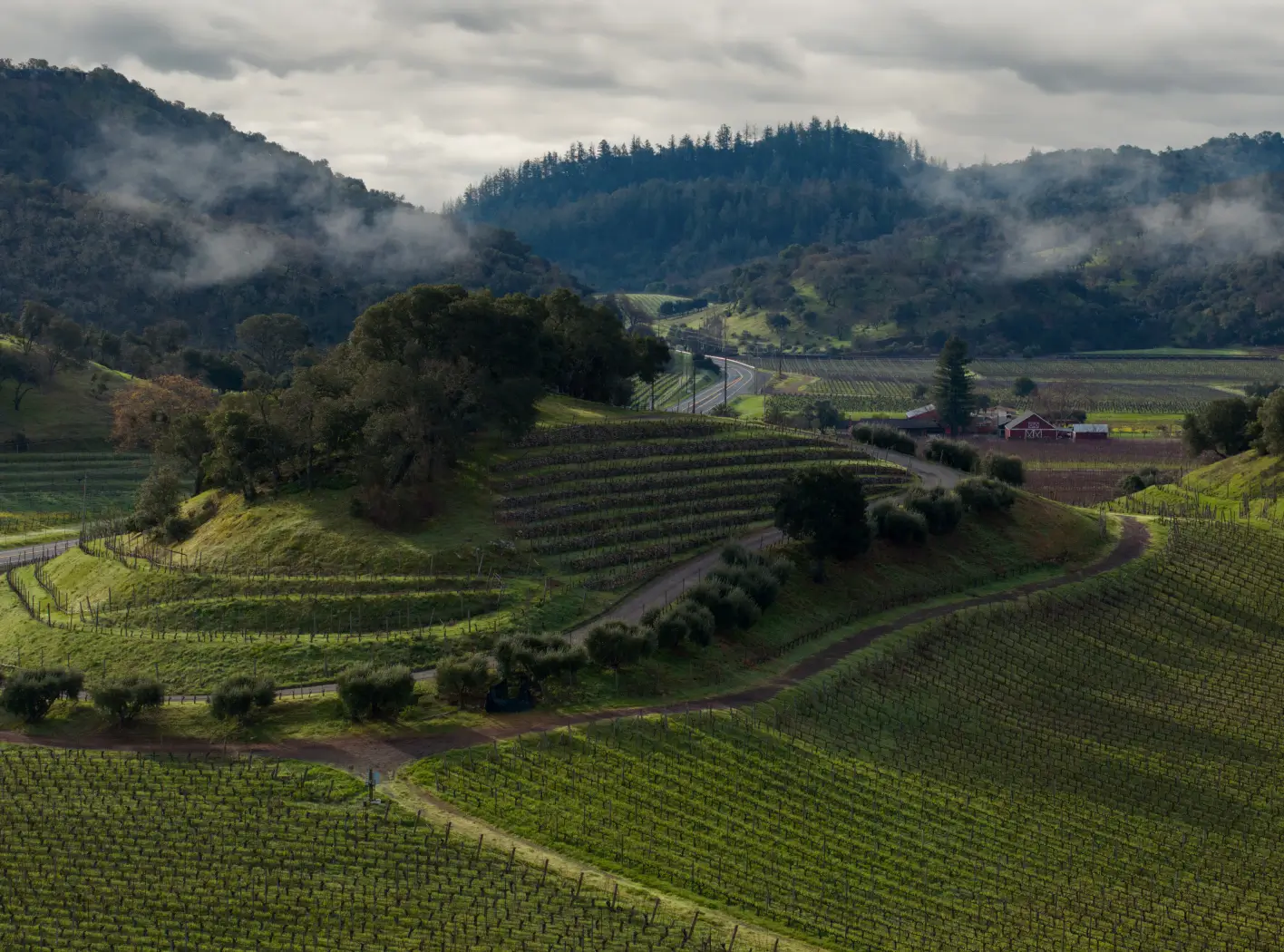
Gustavo brings a granular approach to viticulture at Pine Ridge, working not just from site to site, but soil series to soil series and vine to vine. He’s been with us since 2003 and knows all of our sites intimately, from the rhythm of the winds to the varying degree of sun exposure. While he loves the many differences of the appellations, Howell Mountain might just be his favorite. The dramatic terrain offers a challenge he simply can’t resist.
Persuaded by Place
Access to such a broad set of sites within the valley affords unique opportuities. We can spotlight the characteristics of sub-appellations or take advantage of the added range of clones, sites, and varietals through nuanced blends. With terroir as our compass, the destination is always distinctive aromatics and flavors.
Learn About Our VineyardsGustavo brings a granular approach to viticulture at Pine Ridge, working not just from site to site, but soil series to soil series and vine to vine. He’s been with us since 2003 and knows all of our sites intimately, from the rhythm of the winds to the varying degree of sun exposure. While he loves the many differences of the appellations, Howell Mountain might just be his favorite. The dramatic terrain offers a challenge he simply can’t resist.
“Knowing each vineyard row by row, vine by vine—that’s how I grow such high-quality grapes. I walk every vineyard, every block, once a week. This close connection to the vines is what gives us the quality grapes that allow us to make such high-quality wine.”
Stags Leap District Vineyards
This valley within a valley touts its own versatile microclimate, one that exposes some rows to warmer temperatures and others to cool conditions. That translates to invigorating fresh fruit here and rich and deep fruit there—the makings of a balanced and structured wine built around well-developed tannins that are as smooth as velvet. Learn more about our Stags Leap District Estate vineyard’s layout with our Stags Leap District Vineyards Map.
Napa Valley Appellations
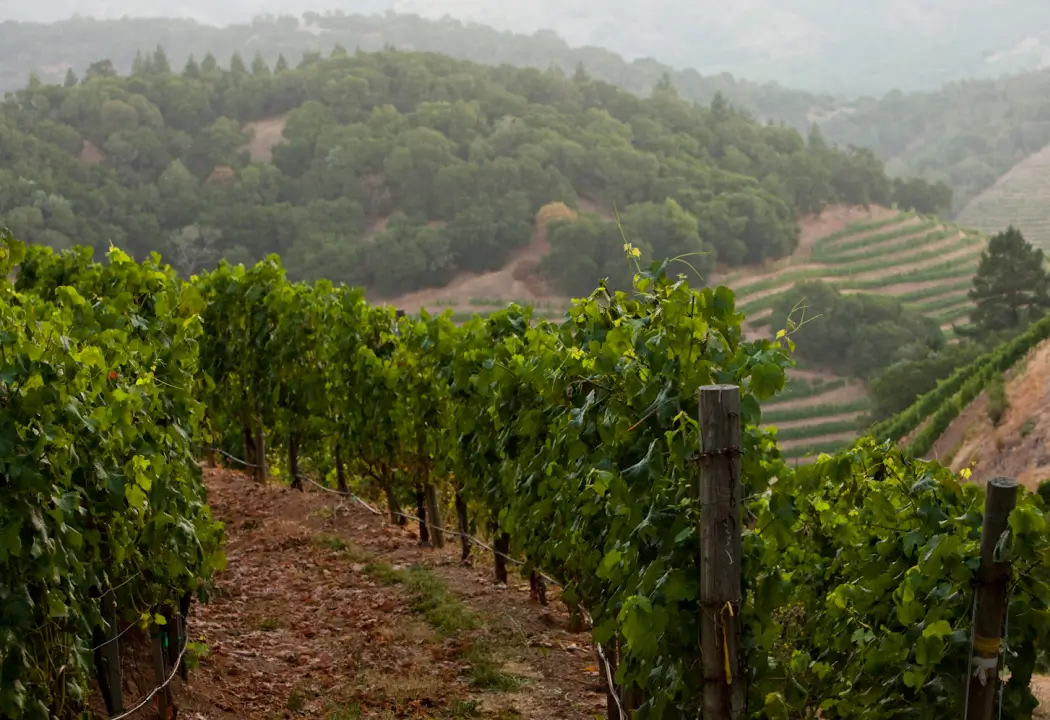
Stags Leap District Appellation
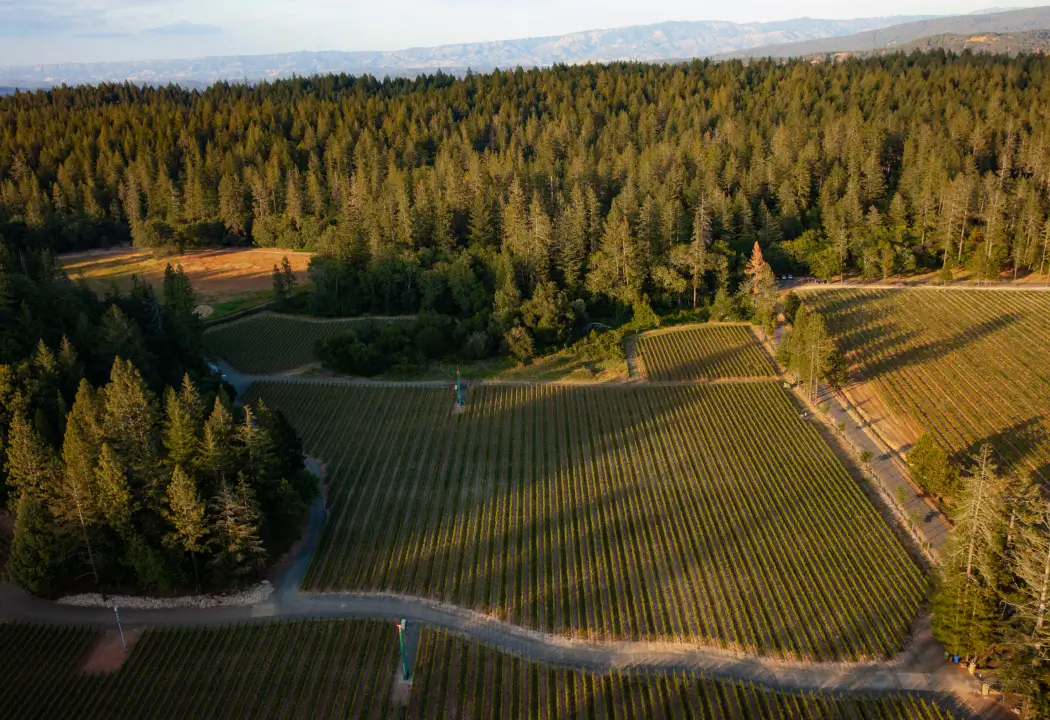
Howell Mountain Appellation
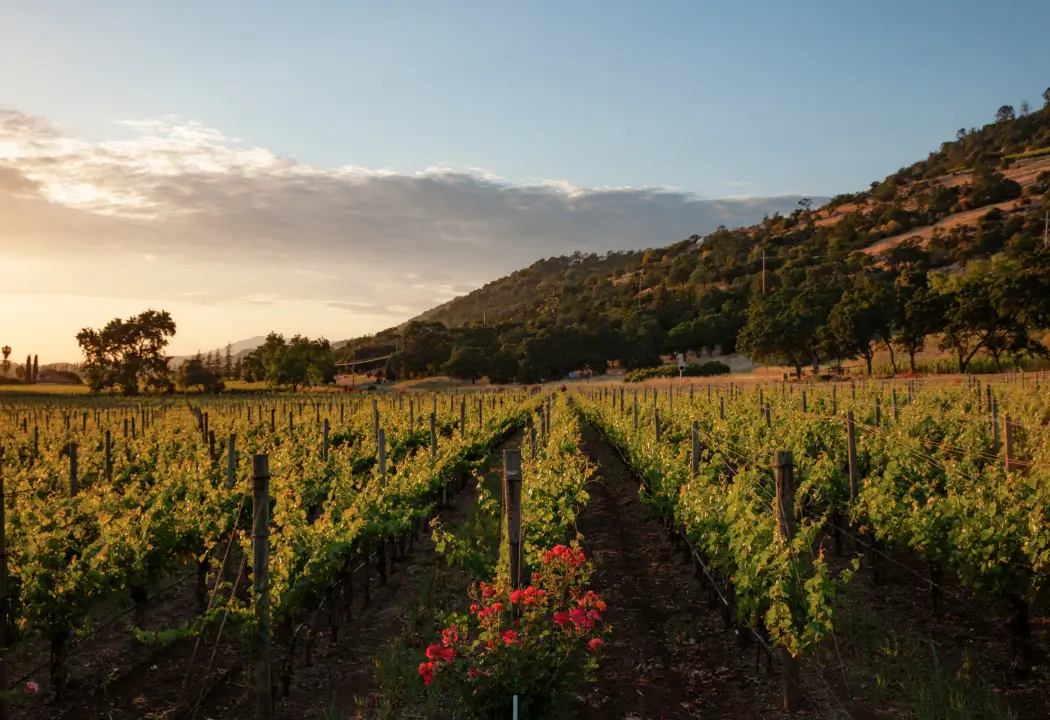
Oakville Appellation
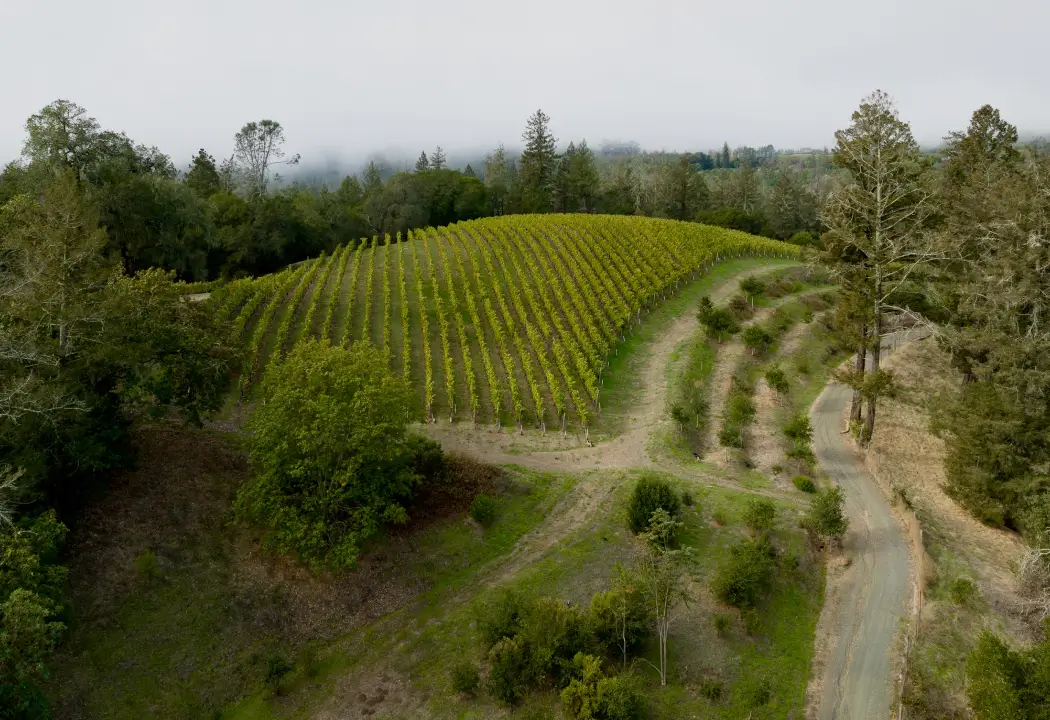
Rutherford Appellation
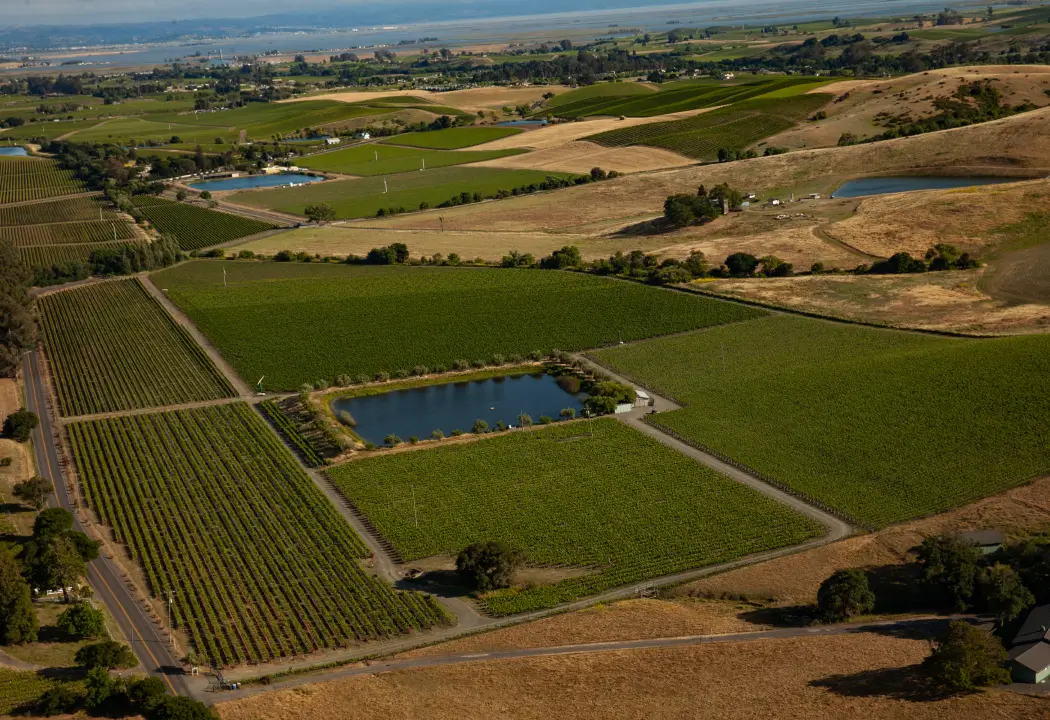
Carneros Appellation

Stags Leap District Appellation
Stags Leap District, marked by a dramatic outcropping of rock that flanks Napa Valley’s east side, was one of the first areas to be designated an appellation based on the distinctiveness of its soils. Our four vineyards here—Pine Ridge Estate, Locked Horns Vineyard, Cornerstone Vineyard, and Circle Hill Vineyard—feature soils that range from well-draining rock and sand to clay loam. The palisades high above help heat the district during the day; at night, vineyards cool down quickly under the influence of breezes from the nearby San Pablo Bay. Cabernet Sauvignon wines from Stags Leap District share concentrated, deep fruit characters with a distinctive balance of power and elegance.
There are many versions of how the Stags Leap area got its name. The local Napa Wappo legend, the most common, says that a mystical stag (some say it was a Roosevelt elk) leaped between the craggy rock outcroppings, known now as the Stags Leap Palisades, to escape hunters. According to another legend, the indigenous inhabitants relied on deer for food and left the stags alone to preserve the gene pool. When the early settlers arrived, they saw these magnificent animals and called the area Stags Leap. Yet a third account relates to the Staggs family, who lived in the region on a ranch with a small vineyard. Finally, the name may simply refer to the abundance of deer and elk in the area combined with the word leap, commonly used to describe British and North American place names (this last reference is from Richard Mendelson’s Appellation Napa Valley).
Est
1978
Size
23.5 acres
Soil
Bale clay-loam
Exposure
Mixed
Elevation
60-400 ft

Howell Mountain Appellation
Howell Mountain rises nearly 2,000 feet above sea level on Napa Valley’s northeastern edge. This elevation gives the rugged region dramatically warmer summer temperatures and colder winters than down on the valley floor, resulting in later budbreak and harvest than in other Napa Valley appellations. Our Las Posadas Vineyard is planted in the dry, volcanic tuff soils of the mountainside. The vines’ struggle to take root here causes them to produce sparse clusters of small, thick-skinned berries that give our wines intense, full-bodied, deep fruit character with attractive savory notes.
Est
2002
Size
9 acres
Soil
Rocky, well-drained volcanic
Exposure
Southeast
Elevation
1800 ft

Oakville Appellation
The Oakville appellation spans the valley from the Vaca Range on the east side to the Mayacamas Mountains on the west. Cabernet Sauvignon vines thrive in the region’s rich, red volcanic soils and mid-valley location, where morning fog that rolls north from San Pablo Bay is followed by warm, sunny afternoons. Our Dos Olivos Vineyard takes its name from two majestic olive trees that flank its entrance. Wines from Dos Olivos express their origins with bright red fruit character and finely integrated tannins.
Est
1988
Size
25 acres
Soil
Gravel and clay
Exposure
Southeast
Elevation
75-500 ft

Rutherford Appellation
The historic Rutherford region has been producing prized Cabernet Sauvignon wines since the mid-1800s, and today this variety represents more than half the appellation’s planted acreage. Our Rutherford Ridge Vineyard has a steeply sloping hillside with well-drained alluvial-fan soils. The hill gives way to a flat valley-floor vineyard with soils of heavy clay. Quintessential Rutherford Cabernet Sauvignon has classic richness, with lush black and red fruit characters, fine tannins, and an elusive dusty mocha quality that the locals call Rutherford Dust.
Est
1995
Size
54 acres
Soil
Fine Loam
Exposure
West
Elevation
50-500 ft

Carneros Appellation
Located along the southern edge of Napa Valley, vineyards in the Carneros appellation benefit from the marine influence of nearby San Pablo Bay. Overcast mornings and cool afternoon breezes contribute to slow, even development of the grapes, resulting in an optimal balance of sugar and acid. Our vineyards here—Carneros Collines Vineyard, McKinnon Vineyard, and Olive Pond Vineyard—have thin, shallow, silty, clay loam soils. This profile provides just enough nutrients to support vine growth and fruit maturity. Our Carneros Merlot reveal delicate red fruit and bright acidity, while our Chardonnay wines have complex citrus and tropical fruit expression.
Est
1994
Size
38 acres
Soil
Deep, heavy clay-loam
Exposure
East to Southeast
Elevation
39 ft
